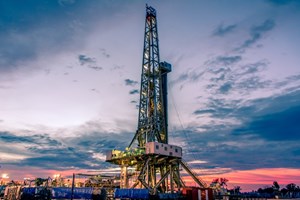CERAWeek by S&P Global 2023: Technology, talent, teamwork key to reducing emissions in oil and gas production
(WO) – Oil and gas operators, service companies and regulators during mid-day on Tuesday gathered to speak at CERAWeek by S&P Global, in a session titled “Reducing Emissions in Oil and Gas Production.” In this session, they shared their perspectives on modern efforts to reduce carbon emissions and greenhouse gasses (GHGs.)
Moderated by S&P Global’s Judson Jacobs, Executive Director of Upstream Technology, speakers shared their viewpoints about technology, talent, and the ever-changing world of oil and gas. Speakers included Baker Hughes Senior Vice President of Climate Technology Alessandro Bresciani; President of the National Hydrocarbon Agency (ANH) Clara Guatam; PETRONAS Senior Vice President of Project Delivery and Technology Bacho Pilong; and ExxonMobil’s Senior Vice President of Upstream--Unconventional David Scott. Together, the speakers emphasized the importance of investment and collaboration in reducing oil and gas production emissions.
ANH’s Guatame announced that the National Hydrocarbon Agency is undergoing a rebrand that involves restructuring the agency around low-carbon opportunities. “As new energy comes in, the agency must transform,” she said. The National Hydrocarbon Agency will be called the Colombian Energy Agency upon completion of the transition. While the agency’s new focus will include decarbonization efforts, the Colombian Energy Agency won’t abandon normal oil and gas regulatory functions.
ExxonMobil’s Scott revealed exciting new plans to bring zero-carbon energy products to the Permian basin. According to Scott, the ink is still wet on an agreement with NextEra Energy to bring wind products to the company’s operations in the Permian basin. The agreement will help ExxonMobil reach Scope 2 emission targets in the next year.
PETRONAS’ Pilong revealed that his company will not meet intermediate emission reduction targets by 2024. However, Pilong remained optimistic. PETRONAS’ open invitation to decarbonizing solutions, “Race2Decarbonise,” has brought hundreds of innovative emissions-reduction ideas to the table. From offshore wind power to carbon capture and storage, the company has narrowed selections down to 31 solutions to help PETRONAS meet its decarbonization goals.
Key takeaways: Technology, talent, and teamwork will accelerate emissions reduction efforts across the board. As the speakers discussed low-carbon opportunities, a common theme emerged: The industry must utilize collaboration, existing talent, and new technologies to make a meaningful impact.
Regarding technology, Bresciani and Pilong echoed that much of it is already here. According to Bresciani, virtually all customers are interested in investing in low-carbon solutions. He posed important questions: What technology is available today, and what will be available in 20 years?
Scott revealed that ExxonMobil is investing in emissions-reduction technologies in the methane reporting and reduction space. Through an upcoming partnership with ScepterAir, ExxonMobil will deploy satellites to create a “constellation” of detection devices that will allow for real-time reporting and rapid response.
Pilong discussed ways that PETRONAS is working toward zero-carbon goals. Pilong said that AI and digital technologies will help identify a “sweet spot” in emissions reduction opportunities. Using artificial intelligence to optimize fleet routes and digital technologies to detect and report will increase efficiency and, in turn, reduce emissions.
Pilong emphasized that people are part of the solution. He sees carbon capture as a business opportunity. According to Pilong, it’s possible to repurpose talent existing in traditional oil and gas production to lower-carbon roles and initiatives. He also made a call for the future generation of energy leaders to be more “carbon sensitive.”
All speakers reiterated the importance of teamwork to reduce oil and gas production emissions. ExxonMobil’s Scott said that industry collaboration will be imperative for progress. As companies pursue new technologies to reduce their carbon footprint, it will take efforts from everyone to achieve net zero by 2050.



